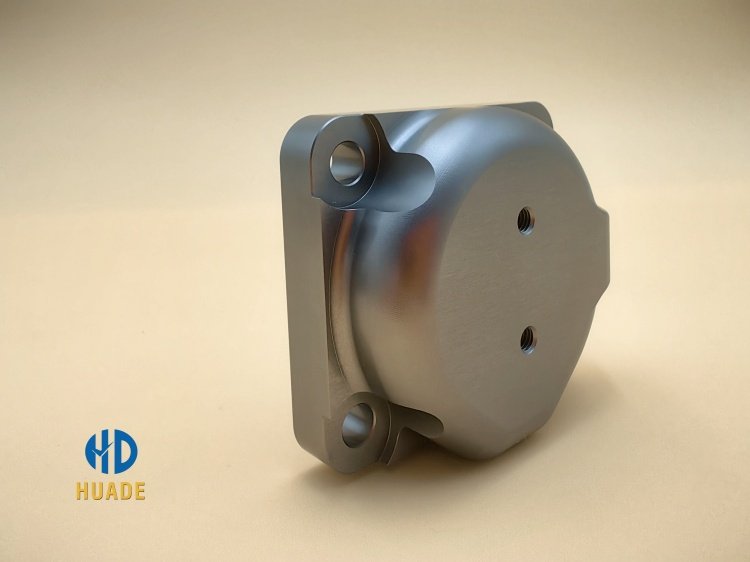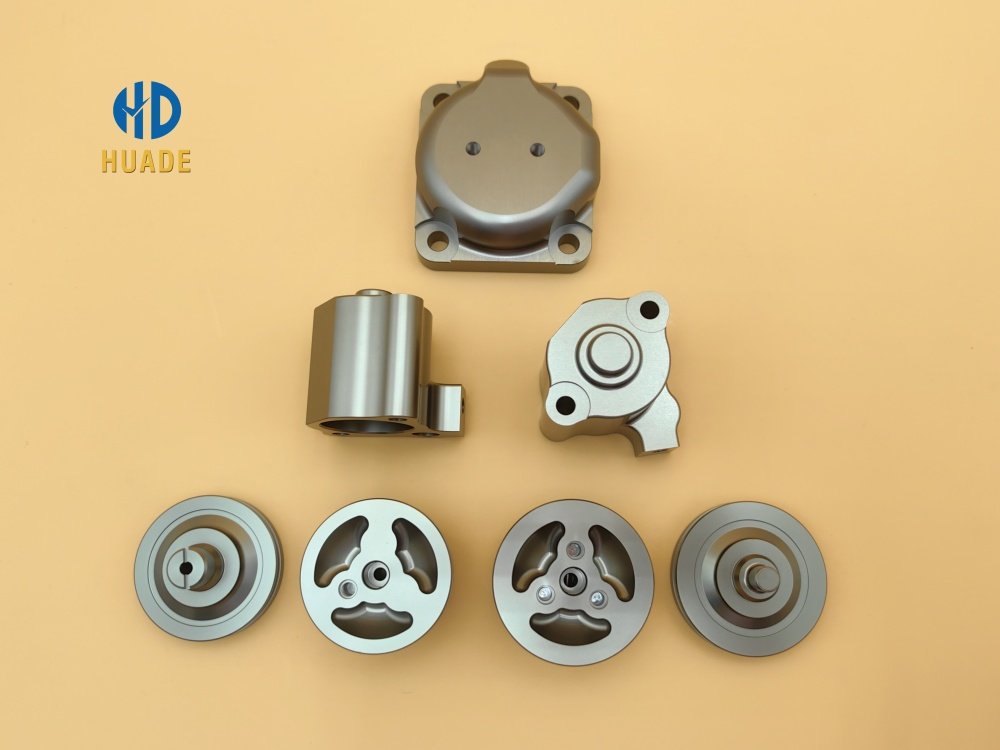Industrial Robot Core Components Explained: How High-Precision Parts Drive Smart Manufacturing
Industrial robot parts are the “backbone” of modern manufacturing. From automotive welding to electronics assembly, material handling to precision polishing, the efficient operation of these automated systems relies on the seamless synergy of their core components. According to industry reports, the global industrial robotics market is projected to exceed $80 billion by 2030, and at the center of this growth lies the performance of robot parts. For manufacturers, understanding these critical components is no longer optional—it’s a prerequisite for building competitive, resilient production lines.

High-precision industrial robot parts such as robot joints and Eins-compatible grippers, illustrating key parts of an industrial robot.
1. The “Body” of Industrial Robots: Mechanical & Drive Systems
The foundation of industrial robots lies in their mechanical systems, including frames, joints, and actuators. Mainstream robots fall into five structural categories:
- Articulated Robots: Human-arm-like design ideal for welding, painting, and assembly tasks. They dominate automotive plants, where six-axis flexibility enables full-range welding.
- SCARA Robots: Optimized for high-speed precision assembly, especially in the electronics industry where component placement tolerances can be as tight as ±0.01 mm.
- Cartesian Robots: Excel at linear movements for pick-and-place, packaging, and palletizing. Their rigid structure makes them highly repeatable.
- Delta Robots: Lightweight spider-like robots designed for high-speed sorting and food packaging, capable of picking 120 items per minute.
- Collaborative Robots (Cobots): Built with advanced force sensors and safety systems, Cobots can share workspace with human operators without safety cages.
These joints and frames are powered by servo motors (for precise positioning) and hydraulic/pneumatic actuators (for heavy-duty stamping or high-force welding). The choice of drive system directly impacts accuracy, cycle time, and energy efficiency.
2. End Effectors: The Robot’s “Hands”
If the body provides structure, the end effector defines purpose. End-of-Arm Tooling (EoAT) determines whether a robot can grip, weld, spray, polish, or assemble effectively.
- Grippers & Chucks: Pneumatic clamps, electric grippers, and modular chucks—such as Eins Robot Chucking Parts—are vital for secure workpiece handling.
- Tool Heads: Specialized attachments like welding torches, spray guns, and polishing wheels enable task-specific automation.
- Sensor-Integrated Tools: Smart EoAT with force/torque sensors or vision cameras allow adaptive gripping, reducing scrap and boosting yield.
In today’s factories, modular design is the new standard. Quick-connect interfaces and plug-and-play grippers from suppliers like Eins allow manufacturers to adapt production lines in hours, not days. This adaptability cuts downtime, lowers tooling costs, and future-proofs automation against changing product demands.

Modular parts of an industrial robot including Eins robot chucking parts, showcasing CNC-machined industrial robot parts used in automation systems.
3. How HDProto Empowers Industrial Robots
At Dongguan Huade Precision Manufacturing Co., Ltd. (HDProto), we specialize in the high-precision components that form the backbone of industrial robots. By addressing challenges in precision, durability, and rapid response, HDProto delivers measurable value to customers worldwide.
- High-Precision Joint Components: CNC-machined gears, shafts, and bearings produced with tolerances down to ≤0.01 mm, ensuring smooth, vibration-free motion even in high-load scenarios.
- Custom EoAT Solutions: Eins-compatible chucks and gripper modules, designed in collaboration with clients, with 3-day prototype delivery for urgent projects.
- Sensor-Ready Structures: Robot arm housings pre-engineered with cable channels and mounting points, simplifying the integration of vision or force-control systems.
- Free Design Support: Every order includes 2 hours of complimentary engineering consultation, helping clients resolve compatibility or application issues before production.
- Proven Results: One appliance manufacturer replaced legacy SCARA robot chucks with HDProto-designed Eins-compatible grippers. The results? Handling success rates improved from 92% to 99.8%, while annual maintenance costs dropped by 40%.
HDProto’s end-to-end service—from prototype to full-scale production—gives customers a reliable partner for evolving automation needs.
4. Future Trends: Intelligence & Sustainability
As Industry 4.0 reshapes factories worldwide, industrial robot components are evolving in three directions:
- Collaborative Safety: Robots equipped with compliant actuators and force sensors allow safe human-robot collaboration, reducing the need for protective cages.
- AI-Powered Predictive Maintenance: Advanced vibration and temperature sensors predict gear wear, enabling timely maintenance and reducing costly downtime.
- Modular Ecosystems: Ecosystems of plug-and-play components—like Eins-style EoAT libraries—make task-switching seamless. For example, a robot can swap a chuck for a welding head in under 60 seconds.
- Sustainability in Manufacturing: Components are now being engineered for recyclability and energy efficiency, with lightweight alloys reducing energy consumption and green anodizing processes minimizing environmental impact.
With the rise of smart factories, the ability to integrate intelligent, sustainable, and modular industrial robot parts will be the decisive factor for global manufacturers.
Conclusion: Precision Parts, Infinite Possibilities
The performance of industrial robots hinges on their components. From micron-level joint accuracy to versatile end effectors, every part defines automation’s limits. At HDProto, we deliver high-reliability industrial robot parts through precision machining, empowering clients to lead the smart manufacturing revolution.
Take Action Now
Explore our full robot component library at www.hdproto.com or contact us for a free EoAT design consultation. With HDProto, you don’t just buy parts—you gain a partner committed to pushing the boundaries of automation.
